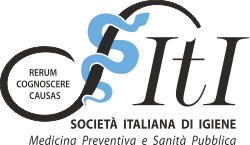Pertussis, also known as whooping cough, is an infectious disease caused by the bacterium Bordetella pertussis. The disease affects all ages, but mainly children under the age of 5; infants under 6 months of age are more at risk of contracting a severe form of the disease.
Transmission routes
The disease is spread from the patient to a susceptible healthy person through the droplets of saliva emitted by coughing, sneezing or even simply speaking. Man is the only known reservoir of the bacterium, therefore the transmission of the disease occurs only between humans.
Pertussis is a very contagious disease: a person with whooping cough can infect up to 90% of those susceptible to the infection that they come into contact with. Infection can occur from the early stages of the disease until 3 weeks or more after the onset of the typical coughing attacks.
There are no healthy carriers of pertussis, that is, people who are not sick but who host and spread the bacterium; there are only patients who are atypical or asymptomatic. The disease in asymptomatic form is, however, very rare as with a thorough clinical examination of the patient, even the less specific symptoms of an infection of the respiratory system can be detected.
The protection acquired through infection or vaccination slowly decreases over time, therefore whoever has contracted pertussis or has been vaccinated only in childhood could fall ill again during adolescence or adulthood, albeit with a milder and/or atypical form. Adolescents and adults in this condition are primarily responsible for transmitting the disease to infants who have not yet been vaccinated or have been only partially vaccinated.
Symptoms
Pertussis has an incubation period of 7-10 days (the average is 4-21 days). The uncomplicated form of the disease usually lasts for 6-10 weeks (the average is 7 weeks) and presents different symptoms in its various stages.
- The catarrhal stage, lasting about 1-2 weeks, begins with symptoms resembling a common cold: runny nose, sneezing, watery eyes, occasional and moderate cough. More often than not, fever is completely absent although is rare cases it is possible to have a fever that is not high.
- In the paroxysmal / convulsive stage the cough becomes more severe. This phase of the disease is characterised by a persistent, irritable cough, which ends with a typical high-pitched ‘whoop’ sound and the expulsion of very dense and viscous phlegm; sometimes coughing is followed by retching. In very young children, the typical ‘whoop’ may be missing, replaced by apnea (absence of breathing), cyanosis (bluish colouring of skin and mucous membranes) and suffocation may occur. This stage generally lasts 1-6 weeks but can persist for more than 10 weeks.
- The convalescence stage usually begins within 4 weeks and is characterised by the alleviation of symptoms and improvement in the patient's general condition.
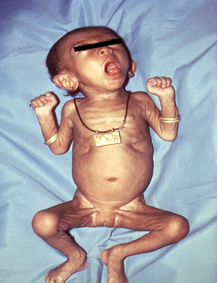
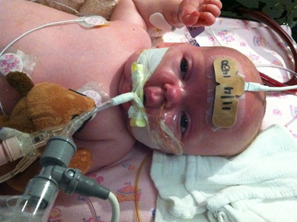
Complications
Pertussis is a very dangerous disease in children under a year old, and even more so in those under 6 months of age: these often face serious complications that can cause disabling and permanent damage. About half of children under a year old who develop whooping cough require hospitalisation.
In children the most frequent complications are:
- subconjunctival bleeding and haemorrhaging from the nose caused by coughing
- pneumonia and bronchopneumonia due to the overlapping of bacterial infections. These occur in approximately 12% of cases
- otitis media, always caused by the onset of bacterial superinfection
- apnea seizures linked to the presence of thick mucus in the airways and during coughing fits
• convulsions and encephalopathy: these are due to the reduction of the oxygen supply to the brain that occurs during coughing and to the action of the pertussis toxin. Encephalopathy is the most serious complication; it occurs in 1-3 children out of 1000 and in 50% of cases causes paralysis, mental retardation and other permanent neurological disorders.
Other, less frequent complications resulting from the violent coughing fits are pneumothorax, subdural hematoma, umbilical hernia and rectal prolapse.
In adolescents and adults, on the other hand, the complications that can arise are usually less severe and require hospitalisation in only 5% of cases. These are:
- weight loss (33%)
- urinary incontinence (28%)
- fracture of a rib, following violent coughing (4%)
Pertussis carries a high mortality rate: 5 deaths occur every 1000 cases, and almost all are in children under the age of one (the percentage increases if the disease is contracted in the first month of life). The main cause of death is pneumonia.
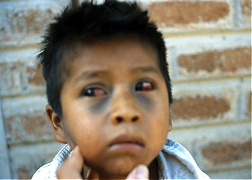
Impact on the population
The disease is endemic (i.e. it is always present in the community) all over the world, with epidemic peaks occurring every 3-5 years. Most cases of the illness occur in the summer-autumn period.
In 2016, there were almost 140,000 cases of pertussis worldwide, of which about 40,000 in Europe alone. According to 2013 estimates by the World Health Organization, the disease caused 63,000 deaths among children under the age of 5, most of them in developing countries where vaccination is less widespread.
In Italy the introduction of the pertussis vaccine has led to a significant reduction in the number of cases of illness and deaths caused by the disease: 2010-2013 data indicate a decline of 97.6% in the disease burden. To date, however, in parallel with the decline in vaccination coverage, the number of children under 1 year of age hospitalised with pertussis is on the rise.
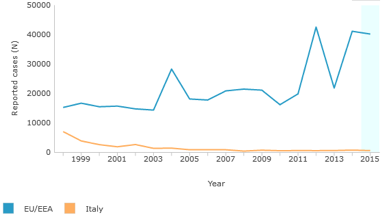
Sources / Bibliography
- Pink Book-Pertussis
- Green Book-Pertussis
- Epicentro-Pertosse
- Ministero della Salute-Pertosse
- WHO-Pertussis
- Pertussis; WHO Position paper (2015)
- ECDC Pertussis - Annual Epidemiological Report 2016 [2014 data]
- Gonfiantini MV1, Carloni E, Gesualdo F, Pandolfi E, Agricola E, Rizzuto E, Iannazzo S, Ciofi Degli Atti ML, Villani A, Tozzi AE: Epidemiology of pertussis in Italy: disease trends over the last century. Euro Surveill. 2014 Oct 9;19(40):20921
- Gabutti, G.; Rota, M.C. Pertussis: A Review of Disease Epidemiology Worldwide and in Italy. Int. J. Environ. Res. Public Health, 2012, 9, 4626-4638
